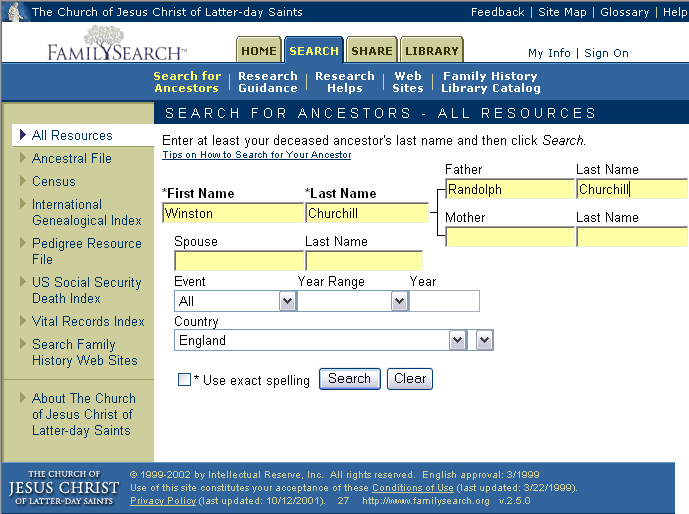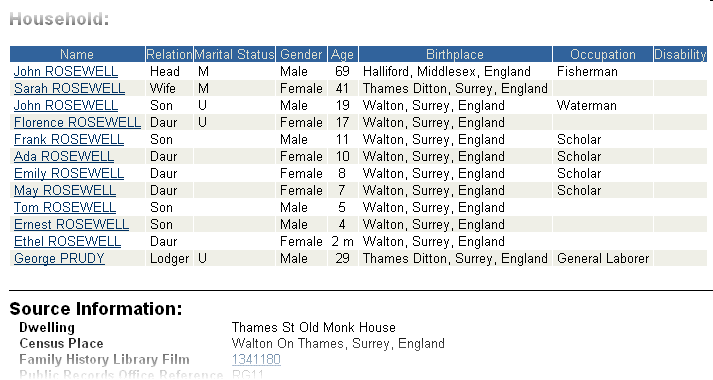3 An Internet search example
3.4 Databases
An alternative to searching by simple text matching is to look inside a database specifically structured for genealogical searching. Probably the largest such database is freely available on the Internet. It has been constructed by the Church of Jesus Christ of Latter-day Saints (often abbreviated LDS and known as the Mormons) and is available through their FamilySearch website. Links from the home page of the FamilySearch website explain the purpose and background to the Church's interest in genealogy.
Activity 25
Visit the search pages of FamilySearch and try searching for an ancestor or a historical figure.
Source: Family search
A search is more likely to be productive if you can provide specific information, such as the name of a parent or a specific date. The data are more likely to contain christening dates than birth dates, and there are few death or burial records. It contains only information on deceased individuals.
FamilySearch hosts several databases. The International Genealogical Index (IGI) contains information about 285 million individuals transcribed from original records such as parish registers. The Pedigree Resource Files are freely contributed by genealogical researchers to record family relationships that they have discovered. The Ancestral File also records families but its records are submitted and checked through the Church. Altogether more than 900 million names are recorded. The databases act as indexes to the original sources of the information; microfilm and microfiche copies are available for sale or at the LDS local Family History Centres (details are available through the UK branch of the Church).
The FamilySearch site also contains a complete transcription of the 1881 UK census. Cross-referencing between census records and the IGI can be very useful. For example, my research in the IGI found christening records for children Frank, Ada Clara, Emily Rose and May Rosewell, whose parents were recorded as John and Sarah. The dates made it possible that they formed one family. Checking in the census record gives a more complete picture:
This is a strong confirmation that the children I found were all from the same family, and shows that there were probably other children in the family. It also gives the age of John and Sarah, which is a starting point for further search for their birth or christening records.
The 1901 census for England and Wales is available online from the National Archives. You can search the data for free but there is a charge to view the records, either as a transcription or as a scanned document. At its launch, this service proved so popular that the system could not cope with the demand.
There is a project underway to digitise the 1891 UK census hosted by Ancestry.co.uk. Access to records requires payment although there are free trials available.


